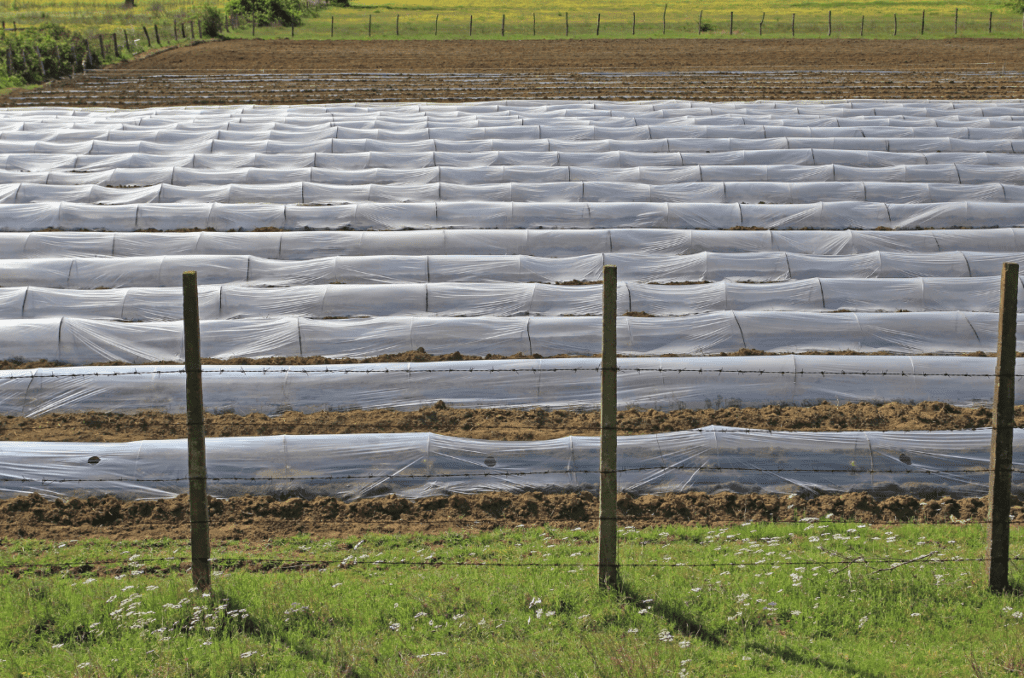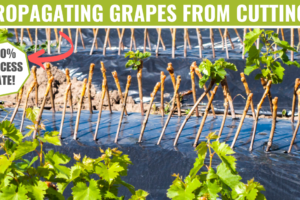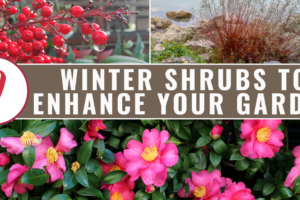Disclaimer: This blog post contains affiliate links. If you make a purchase through these links, I may earn a small commission at no additional cost to you. Learn More. Thank you for supporting our garden community.
How to Protect Plants from Frost in Your Winter Garden
If you’re a plant lover, you know that plant care is a year-round job. As we approach winter temperatures, it’s important to take steps to protect your plants from frost and freezing temperatures. Don’t worry; you don’t need to be an expert to keep your garden alive during the colder months. In this post, we’ll share some helpful gardening tips to help you keep your cold weather plants alive and thriving. We’ll cover cold hardy plants, hardiness zones, how to protect plants from frost, and much more.

How to Protect Plants from Frost
- Understanding Frost and Its Impact on Plants: You will gain insight into how freezing temperatures affect plant health, what makes certain plants more vulnerable, and how factors like microclimates and duration of cold influence frost damage.
- Practical Protection Techniques: We offer advice on protecting plants, making it adaptable to different garden setups.
- Heat-Generating Solutions for Severe Cold: You will learn creative methods to add warmth for extra protection during harsh freezes.
- Steps for Post-Freeze Recovery: For plants that experience frost damage, we explain how to nurture them back to health.
Products
To buy high-quality garden seeds, check out Burpee.
For a wide selection of perennial garden plants, check out Nature Hills Nursery.
For gardening equipment, check out Bootstrap Farmer.
Understanding Freezing Temperatures
Frost occurs when temperatures drop below 0°C (32°F), causing water inside plant cells to freeze.
This disrupts the cell structure, leading to damage or even death in sensitive plants.
Freezing temperatures are especially dangerous during sudden weather shifts, as plants don’t have enough time to get used to it.
Here are some key factors that affect frost damage on plants:
- Plant Type: Tropical or tender plants are most at risk. These plants are not used to temperatures as low as freezing, meaning they cannot adapt to them quickly.
- Microclimates: Gardens that are out in the open will be more affected than sheltered areas, as the temperature is generally lower.
- Duration of Cold: Longer freezing periods increase the risk of damage, especially in vulnerable plants.
Know Your Hardiness Zone
Hardiness zones are geographical regions grouped by their average minimum temperatures.
The zones are numbered, with lower numbers indicating colder winters. Some zones are even divided further into “a” and “b” for slight temperature variations.
Each zone has an average annual minimum temperature. For example, my zone (5b, Southern Ontario) has an average annual minimum temperature range of -15 to -10°F. This means that every winter, the average low temperature is -15 to -10°F.
Additionally, each zone determines your average first and last frost date. The “first frost” is the first frost to occur in the fall. The “last frost” is the last frost to occur in the spring.
As another example, my last frost date in the spring is May 19. This means that any frost-sensitive plants that I want to plant have to be planted after May 19.
This helps you to know when your plants will be at risk of frost damage. Consider using Old Farmer’s Almanac’s frost date calculator to determine these dates: 2024 frost date calculator.
You Still Have to Check the Forecast
Even though you know your first and last frost dates, they are still only based on a 50% chance of frost. So checking the daily weather forecast in your city is crucial.
When you see that the temperature will be going below freezing, you need to take the proper steps to protect your plants.
Temperatures that Cause Frost Damage
Frost and freezing temperatures can cause damage to any vegetable crop. However, there are some that can tolerate it better than others.
For example, the flavour of many leafy greens, such as kale, collards, and radicchio, improves with cooler temperatures and even a frost or two. The cold weather signals the plant to produce sugars as an antifreeze, and it improves the flavour as well.
Here’s a table of the critical low temperatures at which frost damage typically occurs for 20 common garden vegetables. The temperatures are given in both Fahrenheit (°F) and Celsius (°C):
| Vegetable | Critical Low Temperature (°F) | Critical Low Temperature (°C) |
|---|---|---|
| Tomatoes | 33°F | 0.5°C |
| Peppers | 32°F | 0°C |
| Cucumbers | 32°F | 0°C |
| Zucchini | 31°F | -0.5°C |
| Eggplant | 32°F | 0°C |
| Basil | 33°F | 0.5°C |
| Beans (Green) | 30°F | -1°C |
| Corn | 32°F | 0°C |
| Lettuce | 28°F | -2°C |
| Spinach | 20°F | -6.5°C |
| Kale | 15°F | -9.5°C |
| Broccoli | 26°F | -3°C |
| Cabbage | 25°F | -3.5°C |
| Carrots | 20°F | -6.5°C |
| Beets | 28°F | -2°C |
| Radishes | 26°F | -3°C |
| Onions | 20°F | -6.5°C |
| Potatoes | 30°F | -1°C |
| Sweet Potatoes | 32°F | 0°C |
| Winter Squash | 30°F | -1°C |
Notes on Interpretation:
- Hardy vs. Tender Plants: Hardy vegetables like kale and spinach are highly frost-tolerant and can survive freezing temperatures. Tender vegetables like basil, tomatoes, and peppers are highly susceptible to damage even from light frost.
- Root Crops: Many root vegetables can survive frost if the soil remains unfrozen, as the soil acts as insulation. The leaves may die off, but the roots below the ground will be just fine.
- Microclimates: Specific garden conditions, such as proximity to walls or sheltered areas, can influence when frost damage occurs. For example, my garden is very sheltered from my house and fence, so this chart may not exactly apply.

How Can I Protect Plants from Frost?
1. Cover Your Plants
Coverings are one of the simplest and most effective ways to protect plants:
- What to Use: Frost cloths, old sheets and blankets, burlap, or even newspaper. Burpee carries an adjustable frost protection kit that includes a frost blanket and adjustable wire supports. Check out Burpee’s frost protection kit here.
- How to Use: Drape the frost blanket over your plants in the evening and remove it in the morning to allow for more sun exposure. Anchor the edges with the stakes provided for stability.
For taller plants, use longer stakes to prevent the cover from touching delicate leaves.
2. Water Your Plants Before a Freeze
Moist soil retains heat better than dry soil. Water your plants during the day before a frost is expected, but avoid overwatering, which can lead to root damage.
Considering that the roots of the plant are the most important, this will help to protect them from frost damage.

3. Add Mulch for Insulation
Mulching is a great way to insulate plant roots. Apply a 2-4 inch layer of organic mulch, such as straw, leaves, or wood chips, around the base of plants to protect them from temperature fluctuations.
This helps to trap heat in the soil, warming up your plants further.
Additionally, try using a dark-coloured mulch, such as leaves or grass clippings, as these will absorb more sunlight compared to straw. This will help to heat up your plants even more.
4. Bring Potted Plants Indoors
Potted plants are more vulnerable to freezing because their roots are less insulated. Before temperatures drop, move them to a sheltered location such as a garage, basement, or sunny indoor spot.
This is especially true if you are growing warm weather crops in your garden, such as citrus trees, tropicals, or peppers. All of these plants are perennials, meaning they will come back next year with the right conditions.
If you want to keep them alive, bring them indoors in the fall to keep them away from frost.
I bring in my rosemary, thyme, and pepper plants every year to protect them from the harsh winters here.
5. Use Heat Sources for Extra Protection
For severe cold snaps, you can add supplemental heat:
- Place buckets of warm water near the plants to radiate heat overnight.
- Use heat lamps or space heaters for greenhouse setups.

6. Build a Cold Frame
Speaking about greenhouses, you can build your own mini greenhouse, known as a cold frame. Check out our post to learn more.
If you are not so much into DIY projects, Burpee actually carries an affordable year-round cold frame made just for your garden. Make sure to check them out to learn more.
Post-Freeze Recovery Tips
If your plants suffer frost damage, consider these recovery steps:
- Don’t Prune Immediately: Wait until new growth appears in spring before cutting away dead foliage.
- Water Gently: Rehydrate plants slowly to minimize stress.
- Provide Shade: Use shade cloths to protect damaged plants from sudden sun exposure.
- Next Time: Take the proper precautions when your garden freezes over and you’ll never have to worry again.
Discussion Questions:
- What do you do in your fall and winter garden to protect your plants from frost?
- Do you have any plants that you will be taking indoors this winter?
Let us know in the comment section below!
Frequently Asked Questions
Any thick and soft material is perfect for insulating your plants from freezing temperatures. Blankets, sheets, burlap, and towels work very well. Check out Burpee’s frost protection kit as well.
Yes, you can cover your plants with plastic bags or tarps. Just make sure the plastic doesn’t touch the leaves or stem, as this can cause frost damage.
Generally speaking, most vegetable crops can survive temperatures as low as 5 degrees celsius. But those that are sensitive (tomatoes, eggplant, squash, etc.) should be protected at temperatures this low.
You can leave the frost blankets on as long as they help your plants. Keep the cover on at night and remove it in the morning to allow the sunlight to warm up your plants.
Even More Gardening Ideas
Here are a few more posts to get the ball rolling in your garden!
- How to Grow Peas from Seed in Every Season
- 100% Success Method for Propagating Grape Vines from Cuttings
- What is Cold Stratification? Here’s What to Know
If you enjoyed this article, make sure to share it with your friends and family members who are also looking to improve their gardening skills. Also, consider signing up for our email newsletter; don’t worry, we won’t spam you, just fresh gardening tips and tricks every week!
If you want to learn more about gardening, foraging, and nature, check out The Real Gardener on LinkedIn, YouTube, and Pinterest.
Pin this post for later:










Leave a Reply